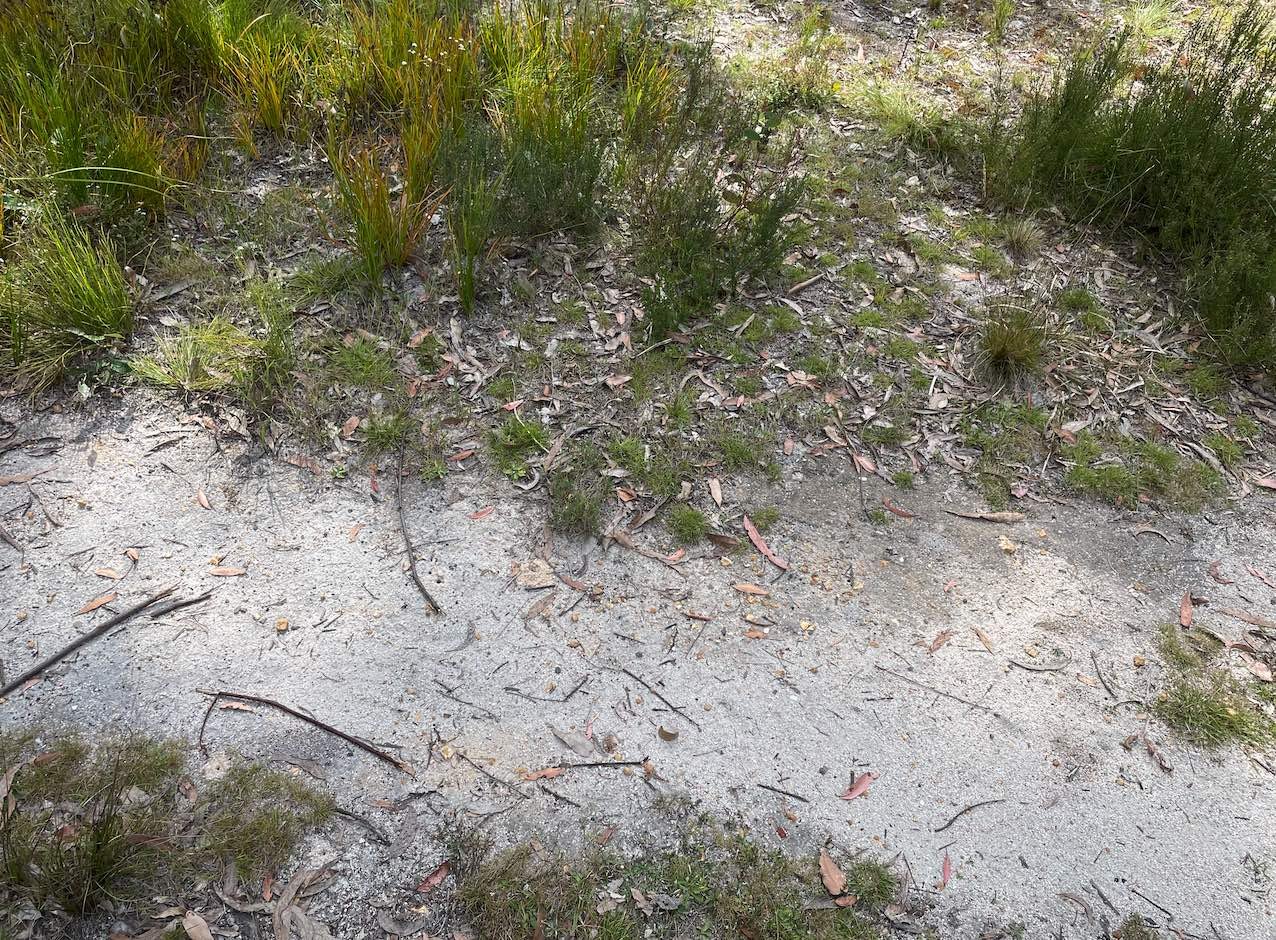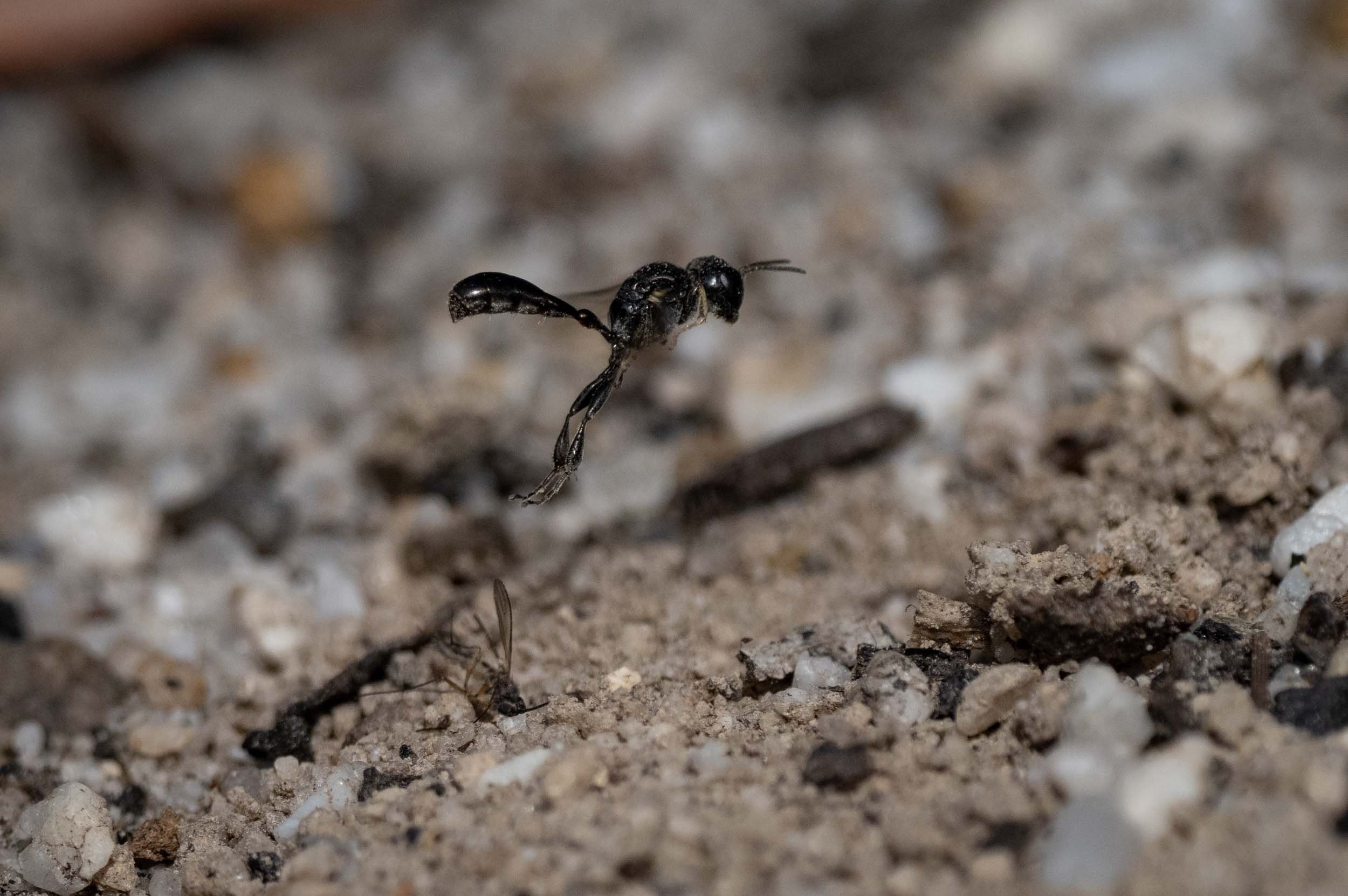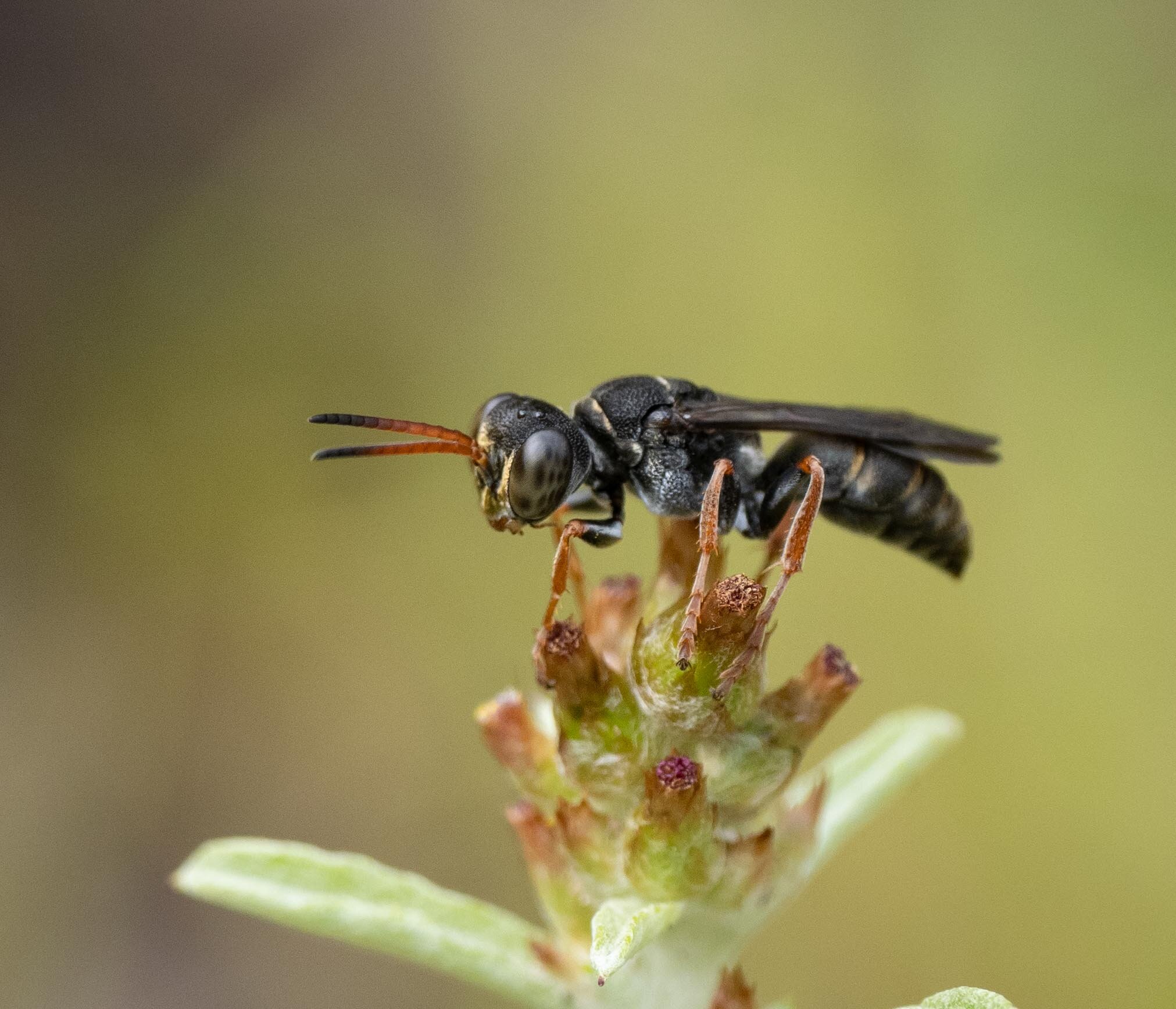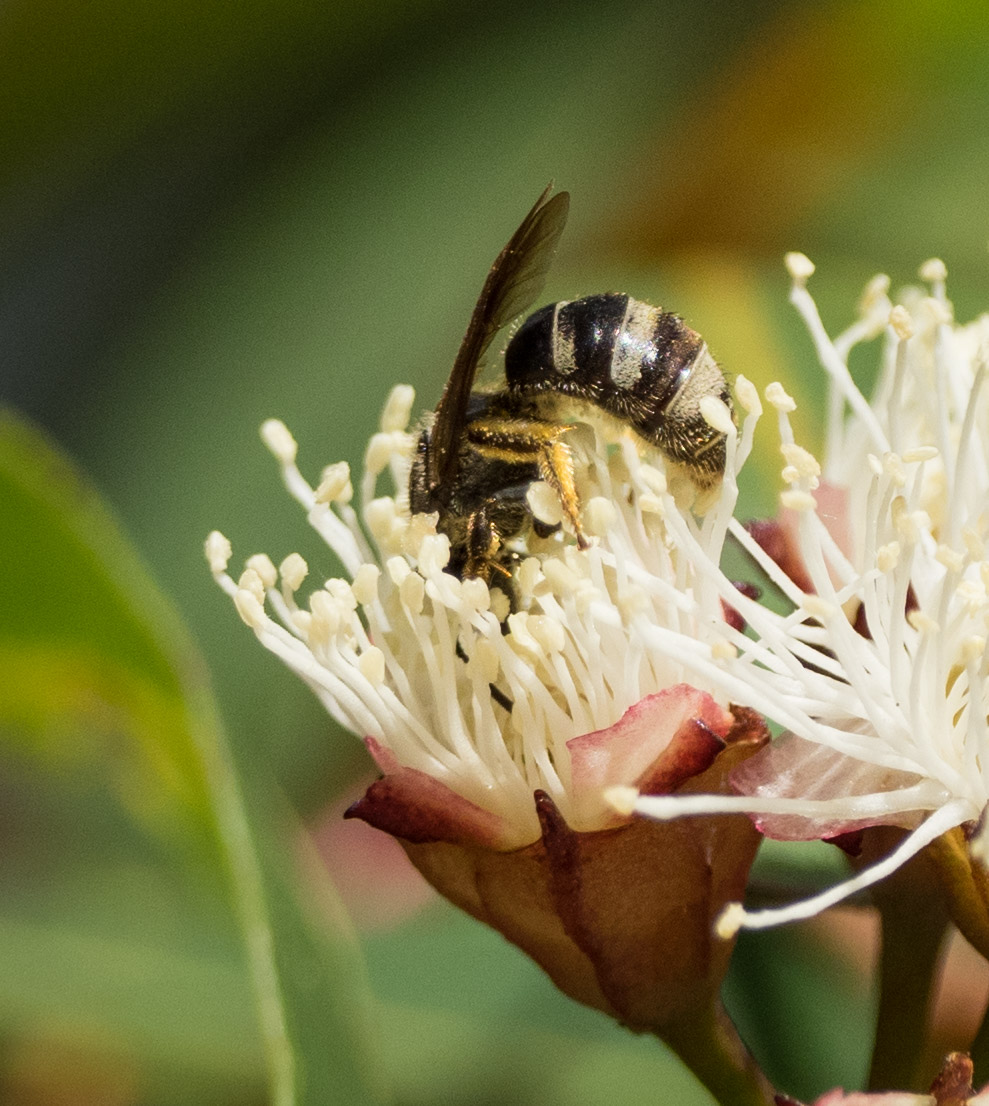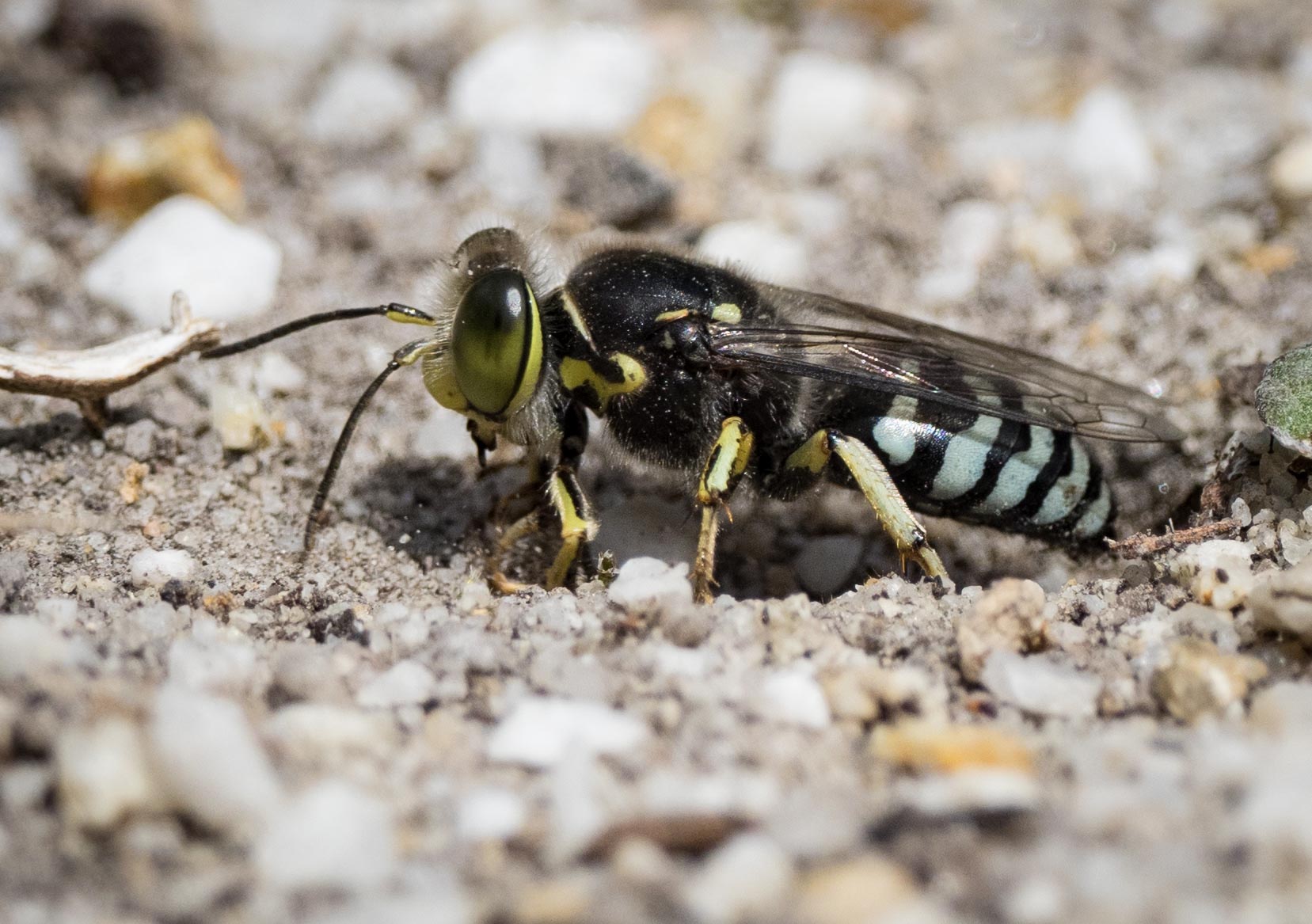Digger wasps
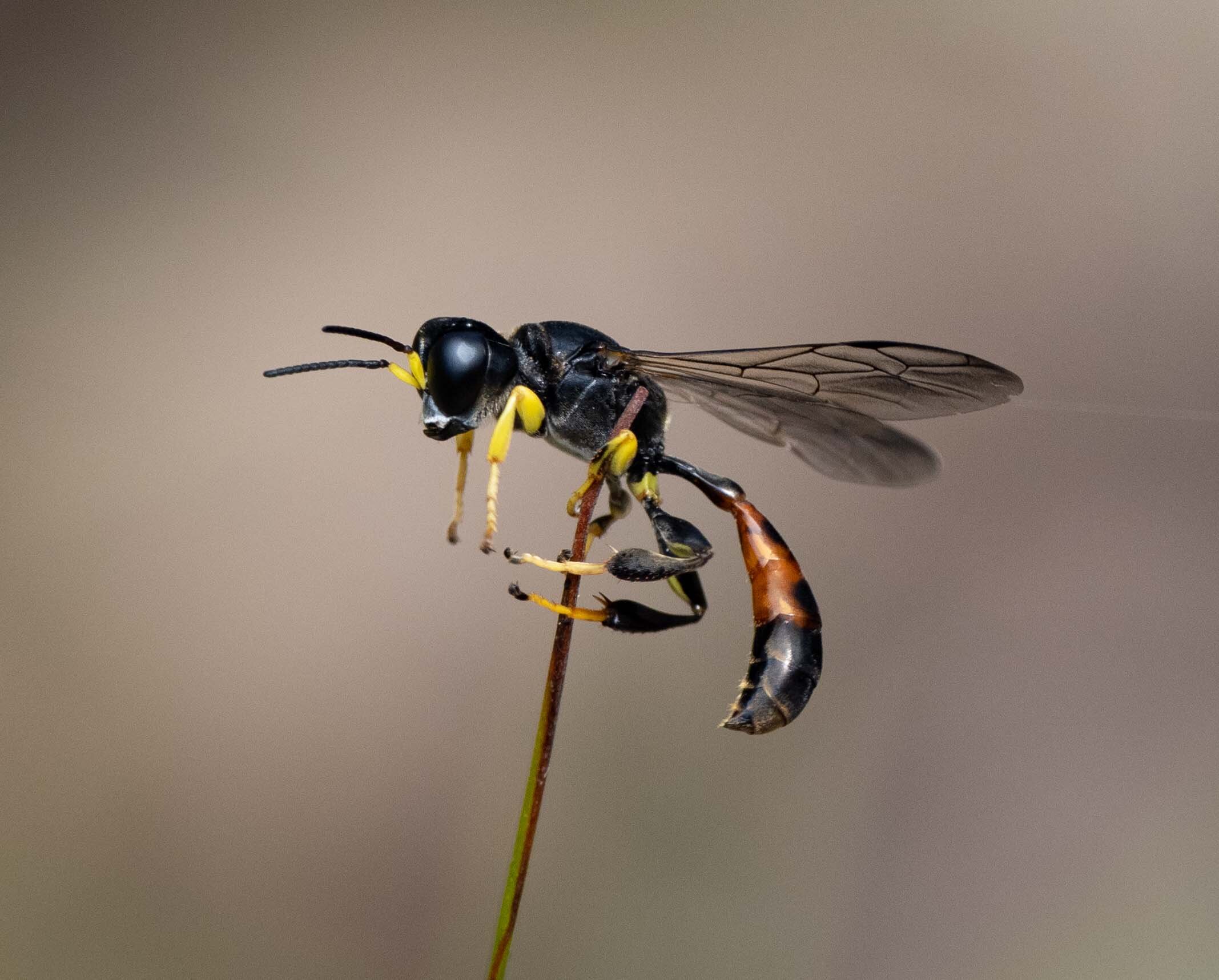
It’s not just flower wasps that spend their youth below ground. Many wasps and their bee cousins hatch from eggs laid in subterranean chambers. We only get to see the adults, and they’re usually not around for long. If anything could distract me from the flower wasps’ antics this Spring it is these attractive little digger wasps.
Since my first sighting a few weeks back, I’ve become a little obsessed (yes, ‘again’, I know) with Podagritus.
These small, colourful wasps are nesting in a sunny patch of low vegetation so I’m spending rather a lot of time crouched in the grass, watching. If I don’t grab the chance it will be gone. Small insects, large forest, ephemeral behaviour. It’s a rare opportunity to witness this intriguing event – too good to miss.
The first insects I saw seemed quite clumsy – clambering about and clinging precariously to the vegetation. I now believe those first sightings (in late October) were newly-emerged wasps still finding their feet.
The numerous wasps I now see at that same site are clearly focussed on reproduction, and not clumsy at all. The females arrive periodically, carrying large paralysed flies. The males circle about in a rhythmic, dipping flight.
Interestingly, the males look remarkably like the stiletto flies Ectinorhynchus, with their long dangling legs and flashes of silver. And some Podagritus species are known to prey on Ectinorhynchus. Curious!
What’s known
As usual, I did a bit of reading to learn more about them and make sense of what I’m seeing.
Podagritus belongs to the family Crabronidae, subfamily Crabroninae – commonly called digger wasps. There are 30 species of Podagritus listed on the Australian Faunal Directory. As the most recent taxonomic revisions are in French, I’m content to leave the ID at genus level.
There’s little documentation about the lives of Australian Podagritus species, but I did find one paper of interest … a study of P. leptospermi made near Canberra, 50 years ago (ref. 1).
The authors observed several wasps nesting close together in a bare, earthen bank. The wasps constructed long burrows with several side chambers. The chambers were each stocked with 4-6 flies of the family Therevidae (Ectinorhynchus & Anabarhynchus), along with just a single egg.
The authors also noted that the females would stockpile flies in the burrow (at ‘y’ in diagrams) in advance of constructing egg chambers.
Diagram of 30cm deep burrows of Podagritus leptospermi.
Extract from Evans & Matthews, 1971 (Figs 1-2).
The Canberra study generally accords with studies of Podagritus in New Zealand (ref. 2). There too, numerous females nest in close proximity and leave the burrow open during provisioning. However, the New Zealand species are unusual for Podagritus in that they are not fly specialists. Most are highly catholic in food choice while one species – Podagritus parrotti – feeds exclusively on adult beetles (ref 2).
What I’m seeing
At a rough estimate I’d say there are 10-20 wasps nesting in a patch of around 20 square metres. The soil is sandy, the ground is flat. They seem to favour one of our walking trails, apparently preferring the slightly compressed soil and the reduced vegetation it affords.
Podagritus leave the nest burrow unguarded and open. This is quite different to the behaviour of some of the other sand-nesting wasps we’ve seen here. Bembix (Crabronidae; Bembicinae) close the opening after each visit, while Cerceris (Crabronidae: Philanthinae) nest cooperatively with one wasp on guard during the day.
Within a few minutes of entering the burrow with prey, this female reappeared – she paused briefly at the burrow entrance before flying off. (01/11/2020)
Each sandy Podagritus nest mound seems to belong to a single wasp. I’ve never seen more than one wasp at a burrow entrance at any one time. Of course, I can’t be sure that they aren’t cooperating in some way, but I’ve seen no evidence of it.
Females returning with prey usually fly directly into their burrow, quickly disappearing from sight. Occasionally, however, they first land in nearby vegetation – and so I get a look at their prey.
They are targeting the relatively large stiletto flies, Anabarynchus, although I have also seen them hauling other types of solid-bodied flies.
Most glimpses I get are fleeting. The patrolling males rarely land, and the returning females quickly vanish into their burrows. But not always.
Lost nest, lost prey
On one occasion I witnessed something rather strange. A female returned with prey but could not find the burrow entrance!
The drama played out over 25 minutes – I was transfixed.
Act 1: the locked door
She immediately found the mound and spent 3 minutes seeking a way in, to no avail. Apparently it was the wrong nest … either one she’d completed and already sealed, or perhaps not even her own.
Act 2: the search
Gripping the fly, she flew off briefly but soon returned, dragging her awkward load through the tangle of vegetation. She was clearly searching, and it must have been exhausting work. Five and a half minutes after arriving, she abandons her prey atop the closed nest. Still alive, the fly gives a feeble twitch and is then still.
Act 3: the theft!
I didn’t see where she went. It may be she simply intended to take a rest, gain her bearings, and reclaim her prize.. But when she eventually returned she was one minute too late …
It’s now a month since I first sighted the wasps, and their nesting activity continues. They’ve closed off the earliest nests and relocated activities to adjacent patches of ground. This same behaviour was observed in the New Zealand study (ref. 2)).
This is the first time I’ve ever seen Podagritus but now I’ll be keeping an eye out for the next generation. And we may not have to wait a year. Based on the life histories of other Podagritus species (ref. 2), it’s likely that our local wasps will be ‘bivoltine’. That is, they’ll have two generations per year. If so, I expect the current group of adults to disappear soon and the new batch to emerge later in Summer or in early Autumn.
Although Podagritus are small, they’re conspicuous and I know where to look. I will be watching.
References
Evans, H.E. & Matthews, R.W. 1971. Notes on the prey and nests of some Australian Crabronini (Hymenoptera: Sphecidae). Australian Journal of Entomology, 1971. (open access)
Harris, A.C. 1998. Nesting behaviour, life history and description of the mature larva of the beetle predator, Podagritus parrotti Leclercq (Hymenoptera: Sphecidae: Crabroninae). Journal of the Royal Society of New Zealand, 28:4. 591-604 (open access)
Note: the name ‘digger wasp’ is informal and rather outdated. It was once the common name for wasps in the family Sphecidae, but that family has long since been reorganised. Perhaps I should use the currently accepted common name for Crabroninae,“square-headed wasps” … but it just doesn’t have the same ring to it.





































